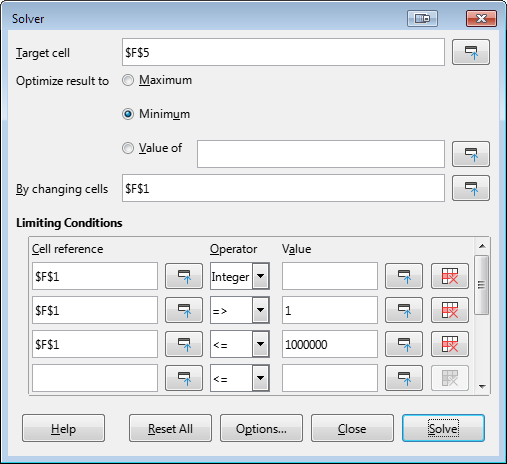[edited] In column D of a sheet are the respective total areas of each of the 50 US states, plus DC, PR, USVI, and a couple of others (cells D3:D59). I got the numbers that I’m using from Wikipedia, so the numbers may not match official sources; for now, this is close enough. I want to know which combination of areas most closely approximates an arbitrary value.
I haven’t been through every possible combination, but the combined total areas of Alaska, North Carolina, Delaware, Rhode Island, Guam and the US Minor Outlying Islands exceeds by 0.48 sq mi my first arbitrarily-selected target of 722.832.95 sq mi (the area of a 960-mile-diameter circle). There may be other combinations that are closer or even exact, but finding them manually promises to be an exercise in frustration.
ps: Apologies if the correction bothers anyone: I added a column (A) indicating the original relative line numbers, so that no matter how I sort the data in columns B through M, I can easily restore the original sort even if I forget what it was. Additional info is in my comment to the first answer.


